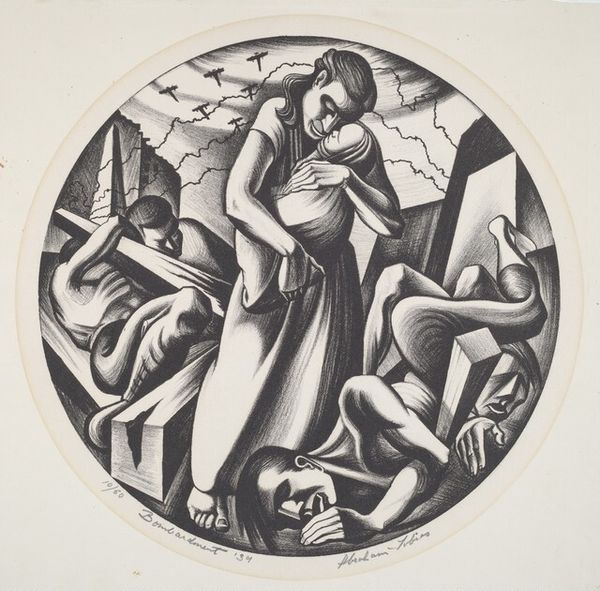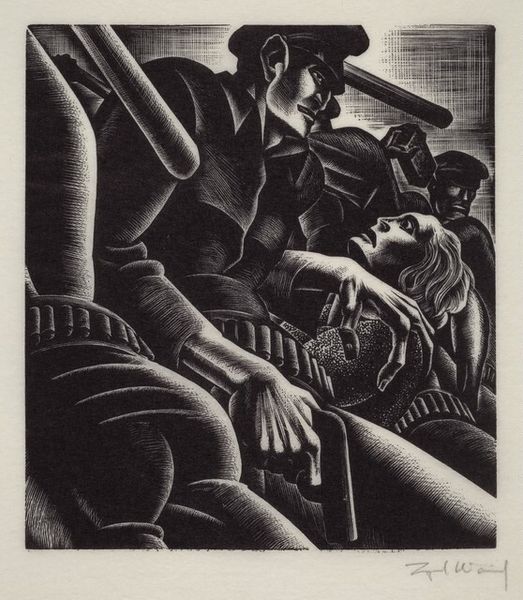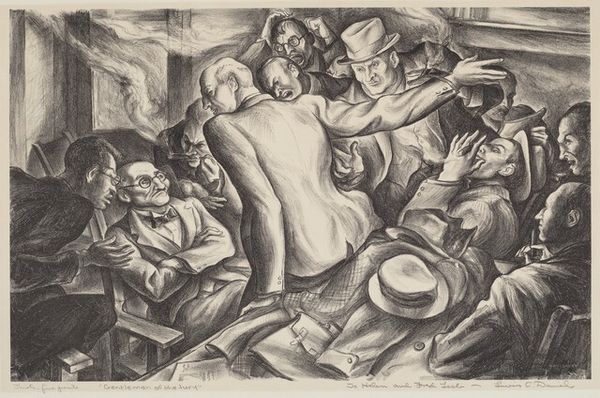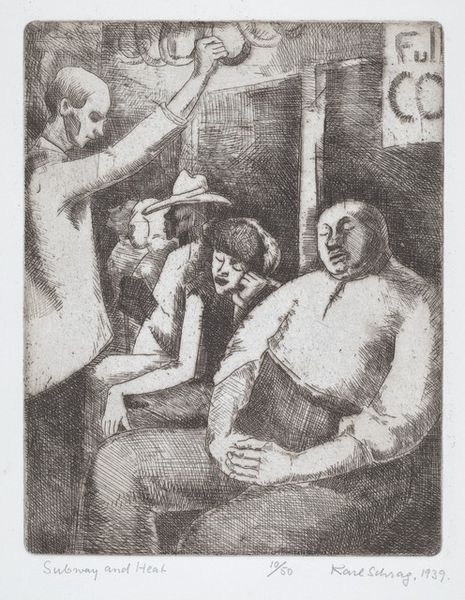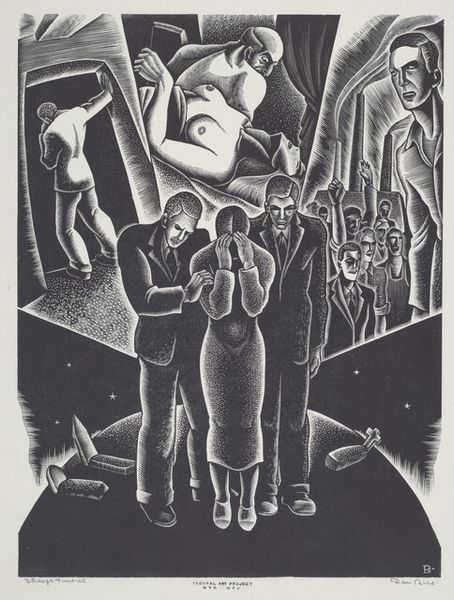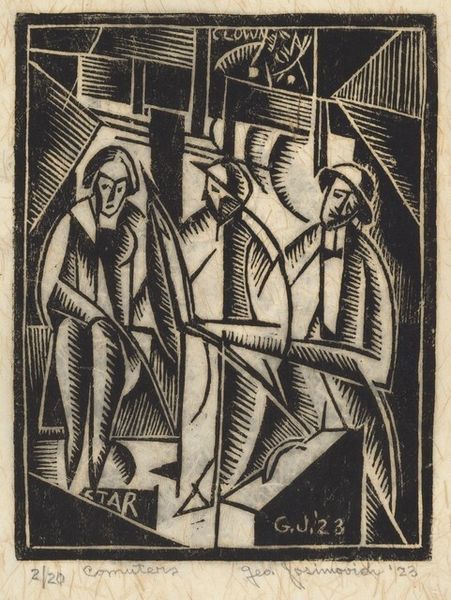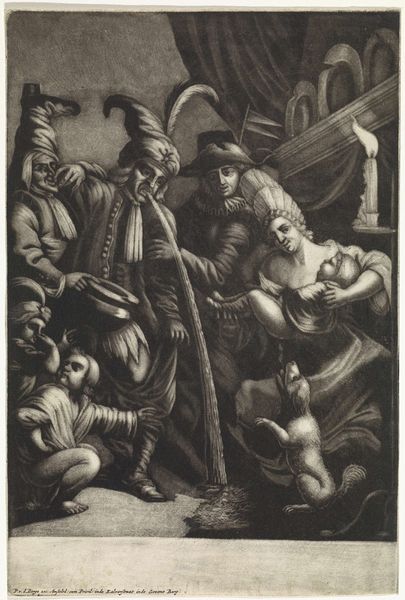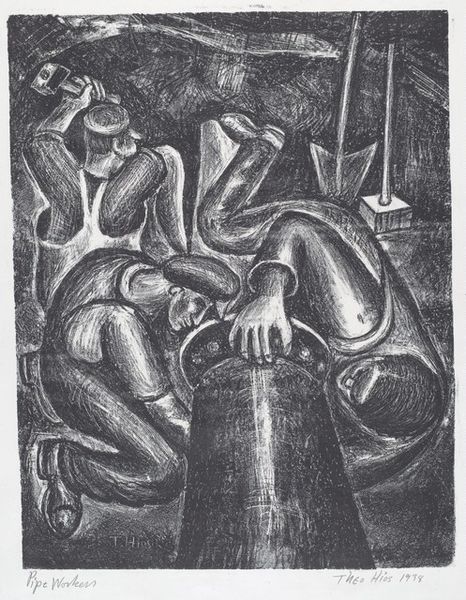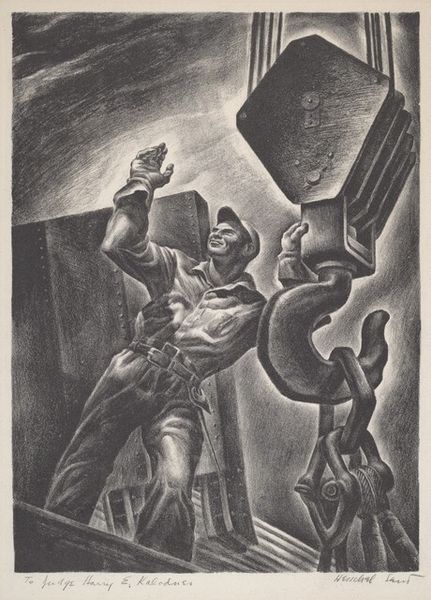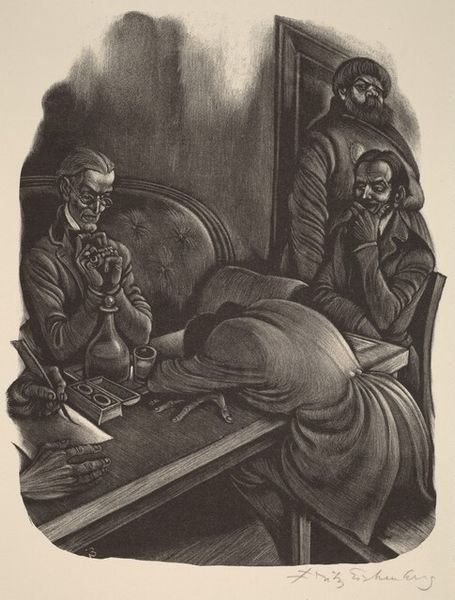
drawing, print, pencil, graphite
#
drawing
# print
#
caricature
#
caricature
#
figuration
#
social-realism
#
pencil drawing
#
pencil
#
graphite
#
portrait drawing
#
history-painting
Dimensions: Image: 305 x 227 mm Sheet: 400 x 286 mm
Copyright: National Gallery of Art: CC0 1.0
Editor: Here we have Jacob Burck’s 1934 print, “Untitled (Work or Bread),” rendered in pencil. It feels like a frozen moment of social unrest. What’s your perspective on how the medium contributes to the message here? Curator: The immediacy and accessibility of pencil—a material so readily available and often associated with sketches and preliminary studies—speak volumes. Burck isn't using rare pigments or complex techniques; he's employing a tool of the working class to depict their struggle. This aligns perfectly with the social realist movement. Notice how the very texture of the graphite creates a sense of grit and urgency. Does this resonate with the subject? Editor: Absolutely. There's no glamour, just stark reality in the shading and linework. The choice reinforces the ‘commonness’ of both the artist and the subject he is depicting. It is easy to relate to and engage with because of it. Curator: Exactly. Also, the printed element, however, does allow the drawing to be easily reproduced and shared among a wide range of people, to broaden awareness to the problem, do you think? It is a social message, created using economical means, distributed widely. What statement do you believe the artist intended to make? Editor: I guess this enables the artist’s work to have political influence to galvanize supporters in times of economic insecurity. I learned how integral materials are to interpreting intention and disseminating a statement to a greater public. Curator: I agree; it's a potent combination of material choice, production, and message designed to create social impact. These everyday resources speak volumes, reflecting not just artistic talent, but a pointed political stance.
Comments
No comments
Be the first to comment and join the conversation on the ultimate creative platform.


